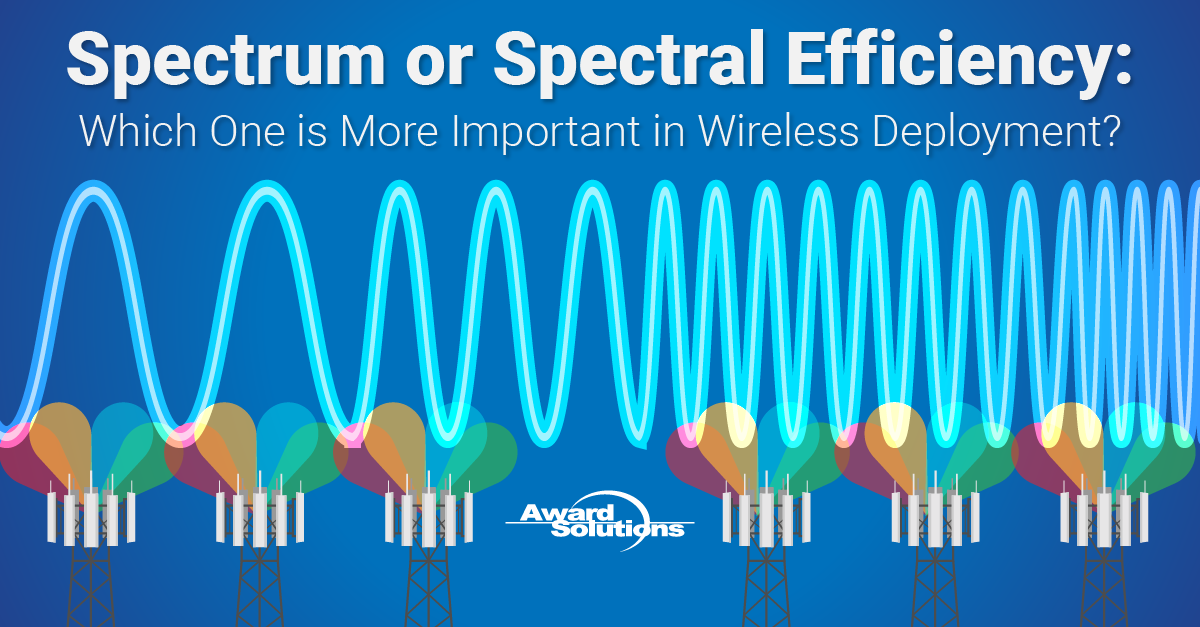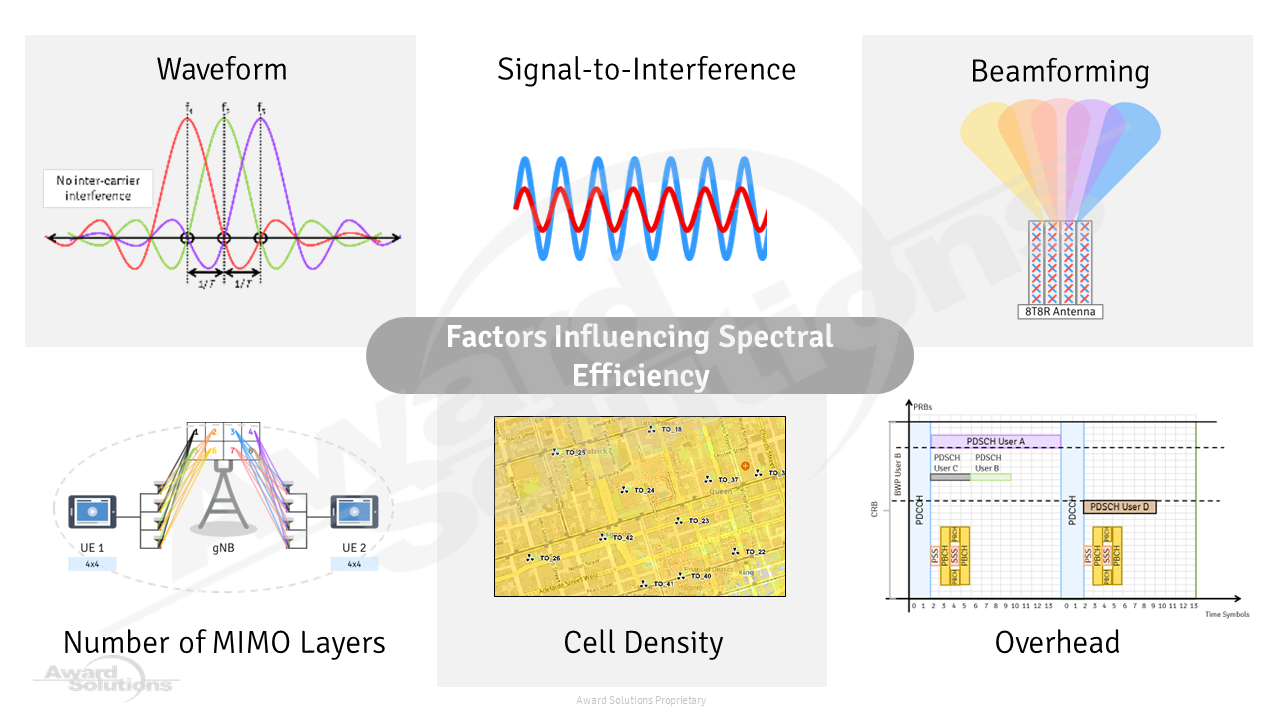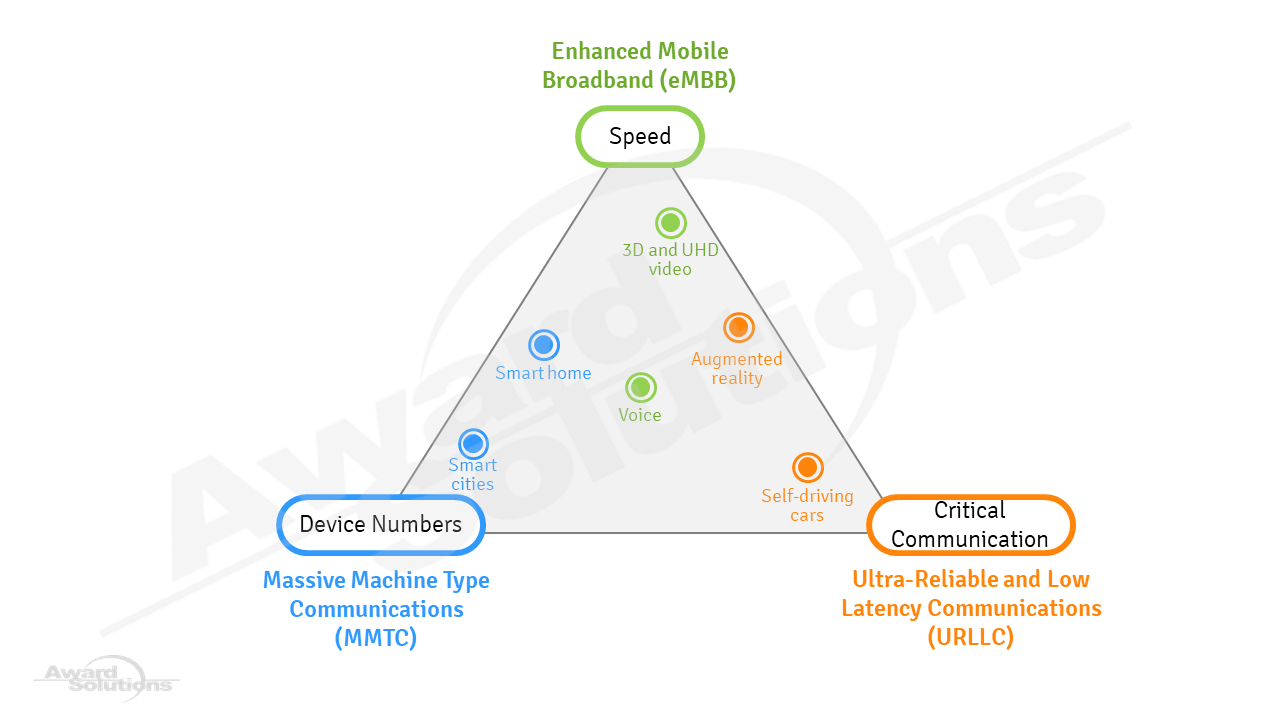
Modern communication for personal and professional purposes makes wireless networks essential. Wireless networks rely on radio spectrum allocation to transmit data between the network and devices. As demand for wireless services grows, so does the need for efficient use of the available spectrum. The spectrum and the efficient use of spectrum resources are the two primary considerations in wireless deployment. Let's explore the importance of the radio spectrum and how it impacts wireless deployment.
Consider this analogy from the transportation industry. When moving large, heavy loads in transport, we look for a truck to do the job, but when transporting people, we look to a car for flexibility and speed. Similarly, when transporting data in wireless networks, the frequency band of operation and the amount of spectrum used is determined by the type of service planned (e.g., eMBB or IoT or AR/VR) and capacity needs in the service area. Similarly, spectral efficiency, or the number of bits per hertz of spectrum used, is much like a vehicle's fuel efficiency. In both cases, we expect technological improvements year-over-year.
The efficient use of spectral resources is the spectrum's number of 'bits per hertz per cell.' However, the possible number of 'bits per hertz per cell' is influenced by several factors, including technology, environmental radio conditions, beamforming, Multiple-Input and Multiple-Output (MIMO), and cell deployment density.
Factors Influencing Spectral Efficiency in 5G
In the case of 5G, its use of Orthogonal Frequency Division Multiple Access (OFDMA) brings efficient spectrum use by managing inter-carrier interference and maximizing the spectrum use.

Depending upon where a user is in the deployed cell environment, radio conditions evaluated by Signal-to-Interference/Noise Ratio (SINR) or Reference Signal Receive Quality (RSRQ) also play a crucial role in spectral efficiency. Better SINR/RSRQ means more opportunities to get better Modulation and Coding Scheme (MCS) assignment, allowing more bits to be sent per Hz of bandwidth.
Beamforming, inherent in the 5G air interface, provides a better signal in a user's direction while reducing interference in the surrounding area, improving SINR and RSRQ. Beamforming also provides for better spatial separation of users in a cell, allowing the same spectrum resources to be used by users in different beams simultaneously, increasing the efficiency of spectrum use.
This ability to reuse the time and frequency resources multiple times within a cell, either with the same user (SU-MIMO) or across more than one user (MU-MIMO), increases the efficient use of spectrum resources. The number of MIMO Layers, or the number of times the spectrum can be reused, and the type of MIMO (SU-MIMO or MU-MIMO) is influenced by the frequency band used, network equipment capability, and user equipment capability.
Several factors, including the RF propagation characteristic of the frequency band in use, services and capacity requirement in the area, and deployed infrastructure, influence the density of cells deployed to support wireless services. The market requirement and deployed infra are driven by business needs or plans and infra or resource constraints. The RF propagation characteristic is a function of the frequency of operation in each carrier – low and mid-band frequencies will have a better coverage footprint compared to high-band or mmW frequencies meaning fewer cells are needed for low and mid bands from a coverage perspective high-band frequency cells will need to be more densely deployed.
Finally, efficiently managing overheads on the air interface is essential to 5G deployment. The specifications for 5g bring flexibility in how spectrum is used - flexibility in the configuration of signaling and control channel resources and flexibility in the data channel resources. This flexibility adds some complexity to deploying 5G but allows more efficient use of spectrum resources.
Conclusions
5G technology has revolutionized how we consume data – creating new possibilities for businesses and individuals. One of the most exciting features of 5G is the ability to deliver multiple services dynamically in the same spectrum. Whether it's eMBB (mobile broadband or fixed wireless), URLLC (AR/VR or factory automation), or MMTC (smart city or connected devices), 5G can efficiently use the available spectrum to deliver different services with either higher capacity needs or higher numbers of users to service.

In conclusion, the frequency band is critical in determining the efficiency and capacity of 5G services. While low and mid-band frequencies offer better coverage footprints, high-band frequencies enable the deployment of higher cell density with a large amount of spectrum, supporting 5G use cases that require high area capacity. In addition, Beamforming and MIMO capabilities are also crucial in making more efficient use of available spectrum resources in each frequency band.
The spectrum and spectral efficiency discussion scratches the surface of the discourse surrounding Radio Access Network (RAN) capacity and use cases for businesses in the different spectrums and their efficiency; it has highlighted the key factors influencing the capacity build or spectral efficiency. In the subsequent blogs, we will continue exploring different spectrum ranges, including Low Band, Mid Band, and High band, and their efficiency, capacity, use cases, and general discussion on return on investment (ROI). Stay tuned for more exciting insights on the 5G revolution!
